|
|
 CR-2
CR-2
Extremely compact Non Mydriatic
retinal camera with 45° field angle.
Uses a customised digital camera,-
based on Canon’s famous EOS
technology, with special image
processing for ophthalmic imaging;
including innovative digital
Red-free and cobalt photography.
White LED’s in stead of a flash tube
lamp for extremely soft flash and
long life time.
|
| |
EOS 50D digital SLR
- 15.1 Megapixel APS-C
CMOS sensor
- 6.3 fps continuous
shooting, max. burst 75
JPEGs
- New AF system with 9
cross-type sensors
- DIGIC 4 processor
- 3.0” LCD
screen 920,000-dot
resolution, with Live View
mode
- EOS Integrated Cleaning
System
- Clear and bright
viewfinder
- Customisable Picture
Style processing parameters
|
|
|
Key features
|
True 45-degree
image
45° Non Mydriatic Retinal Camera
With the CR-2 you can obtain high quality and
high resolution diagnostic images in a very easy
way. A minimum pupil diameter of ø 4.0 mm (only
ø 3.3 mm in Small Pupil mode) is required.
|
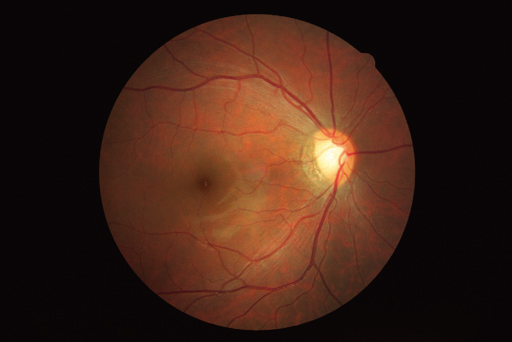 |
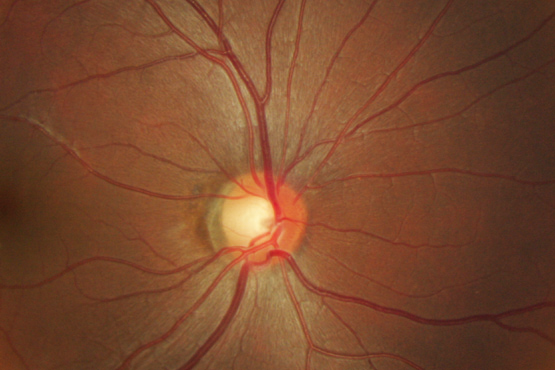 |
2x digital magnification
“2x” mode provides a closer, more
magnified view of the retina. It works
by automatically cropping out the
peripheral edges of the image so that
the region of interest is larger in the
frame. Closeups are extremely clear and
detailed thanks to the high pixel count
of the attached digital camera. |
Motorized chin rest
The motorized chin rest can be moved up
and down to accommodate the patient's
height using a pair of buttons located
on the operation panel. |
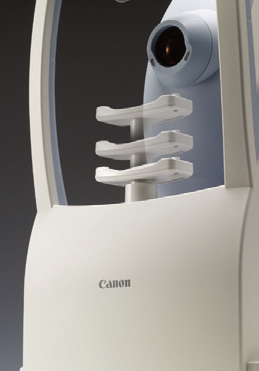 |
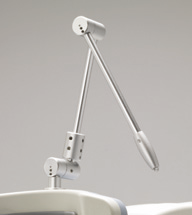 |
Internal
fixation target adjustment
The finely calibrated internal eye
fixation target of the CR-1 provides the
patient with a fixed, consistent point
of focus throughout the image capture
procedure, making it quick and easy to
achieve a clear and stable image. The
fixation target LED can be freely
adjusted via the operation panel to
position the eye exactly as desired. One
push of a button returns the target to
its default position.
A swivel type external
eye
fixation target is available as
an option and sold separately. |
Shorter working distance
A shorter working distance allows closer
interaction with the patient, plus easy
access
to the patient’s eyes. |
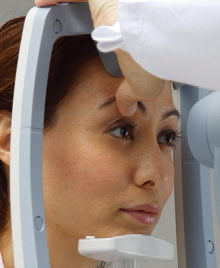 |
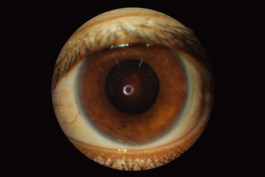
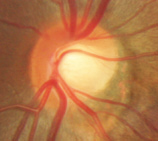
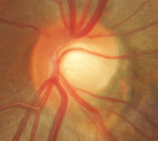 |
Anterior eye and stereo photography
are available |
|
|
|
Features
|
- 45° Non Mydriatic Retinal camera
- 2X digital zoom
- Low flash mode
- High quality retinal imaging
- EOS camera technology
- Digital Red-Free and Cobalt images
- Low flash mode
- Auto Exposure
- Stereo Photography
- Anterior photography mode
- Full LED technology
- Ergonomic and compact design
- Bundled Retinal Imaging Control Software
- Open connectivity and DICOM compliant
|
|
| New generation of Mydriatic Retinal cameras , extremely compact and light weight. High quality imaging with ultra low flash intensity |
|
|
High quality retinal imaging
Canon’s expertise in the field of imaging technology and optics has resulted in the CR-2 exceptional digital retinal imaging capabilities Combined with a dedicated Cameral , based on EOS camera technology, the high resolution images can help the detection and monitoring of ocular conditions such as diabetic retinopathy, glaucoma and macular degeneration.
EOS camera technology
Canon’s own EOS camera technology, with its renowned image processing capabilities, is adapted exclusively to create an unique digital camera dedicated to retinal imaging. With its dedicated firmware and 15.1 MegaPixel it handles all these functions:
• Infrared observation
• Colour fundus photography
• Digital red-free and cobalt fundus photography
Digital Red-Free and Cobalt images
Canon’s expertise in image processing and digital cameras has resulted in innovative digital Red free and Cobalt photography as standard feature in the CR-2. The quality of these images is very much comparable to those obtained with optical filters
Low flash mode
Ultra low Flash Intensity for more patient comfort and faster examinations.
The soft LED flash in combination with the customized digital camera only require a very low flash intensity .It makes it possible to make faster examinations since the pupil almost does not shrink after the flash. So it will be possible to re- take photo’s or to take photos of both eyes in rapid sequence almost immediately. Especially beneficial when photographing elderly persons, who take long time to dilate again. Low flash is extremely useful while performing stereo photography. Low flash will allow to take 2 images for the stereo pair in rapid succession. The patient can easily remain fixed on the target. And importantly the patients’ discomfort will be reduced ; your patients will appreciate the standard low flash mode of the CR-2.
Auto Exposure
Depending on the reflection on the retina the intensity of the flash and observation light will be set automatically for every examination. Of course there is also a manual mode that always allows you full control of the CR-2
Stereo photography
The CR-2 has a software guided stereo photography mode for creating stereo pairs very easily. The display on the digital camera will indicate exactly how to align the CR-2 to create a stereo pair. Furthermore the Canon control software has extensive possibilities for storing and viewing stereo pairs
Anterior photography mode This new mode using an additional compensator lens now makes anterior segment fundus photography a quick and easy procedure.
LED technology
The latest in LED technology, coupled with the high sensitivity of the digital camera sensor, delivers greater patient comfort. Furthermore the CR-2 is equipped with infra red LEDs for the observation light. White LEDs have replaced the strobe tube in the new automatic exposure flash light, reducing the chance of seeing an after image. This in turn improves reliability and negates the need to retake images due to incorrect flash exposure, leading to faster screening.
LED technology for improved reliability and extended life-time.
Ergonomic and compact design
The central control system with illuminated panel has been specifically designed for intuitive user operation in darkened room environments. The ergonomically-shaped surface assists with the alignment phases of examination. CR-2 also provides exceptional portability. The compact design allows the operator to easily keep the patient’s eye open with one hand.
Enhanced overview provides an excellent view of the patient’s eye. The Multifunctional joystick makes changeover
between external eye and retinal observation mode very simple. The focus adjustment can be easily adjusted using the intuitive control dial at the base of the joystick . Only minimum effort is required for up and down adjustment of the optical head
Bundled Retinal Imaging Control Software
The CR-2 comes with Canon's Retinal Imaging Control Software (RICS) for full camera control and image optimization The software has extensive diagnostic tools for optimized workflow and patient management. e.g. Cup/Disc ratio calculation, compare studies, RGB channel display, stereo viewing.
Open connectivity and DICOM compliant
The CR-2 with RICS has extensive network capabilities and is fully DICOM compliant.
|
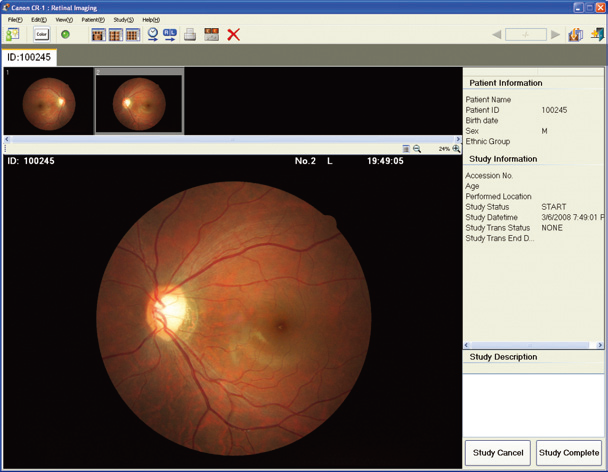
Specifications
|
Optional
Accessories |
|
|
External eye
fixation lamp
EL-1 |
|
|
|
Chin rest paper
(500 sheets) |
|
|
|
|
|
|
General |
|
|
Type of
photography |
Color, Digital
Red-Free,
Digital Cobalt |
|
|
Angle of view |
45 degrees |
|
|
Magnification |
2X |
|
|
Minimal pupil
size |
4 mm (3.3 mm SP
mode) |
|
|
Focus adjustment
range |
Without
compensation
lens: -10 to
+15D
With "-"
compensation
lens: -31 to -7D
With "+"
compensation
lens: +11 to
+33D
Split-line
aligning type
focusing |
|
|
Light source |
Observation
light source:
Infrared LED
Flash light
source: White
LED |
|
|
Eye fixation
lamp |
Internal eye
fixation lamp,
LED dot matrix,
green
External eye
fixation lamp
(sold
separately) |
|
|
Working distance |
35 mm |
|
|
Sensor
resolution |
15.1 megapixels
(resolution may
vary with other
models) |
|
|
Camera |
Digital camera
(Based on using
Canon EOS 50D
digital camera) |
|
|
Built-in monitor |
3.0 inch color
LCD monitor |
|
|
Flash intensity |
Linked to the
photography mode
Can be set
manually |
|
|
Auto exposure |
Available |
|
|
Mount movement
amount |
Stage unit: 100
mm (side to
side), 70 mm
(front and back)
Main unit: 32 mm
(vertical) |
|
|
Chin rest
movement amount |
60 mm |
|
|
|
Electrical and
Environmental |
|
|
Power supply |
AC100V to 240V,
50/60Hz, 1 to
0.4A |
|
|
Operating
environment |
Temperature: 10
degrees to 35
degrees Celsius
Humidity: 30% to
90% (no
condensation)
Atmospheric
pressure: 800
hPa to 1060hPa |
|
|
|
Physical
Characteristics |
|
|
Dimensions (W x
D x H) |
12 inches x 19.7
inches x 18.6
inches
(305 mm x 500 mm
x 473 mm) |
|
|
Weight |
Approximately 33
pounds |
|
|